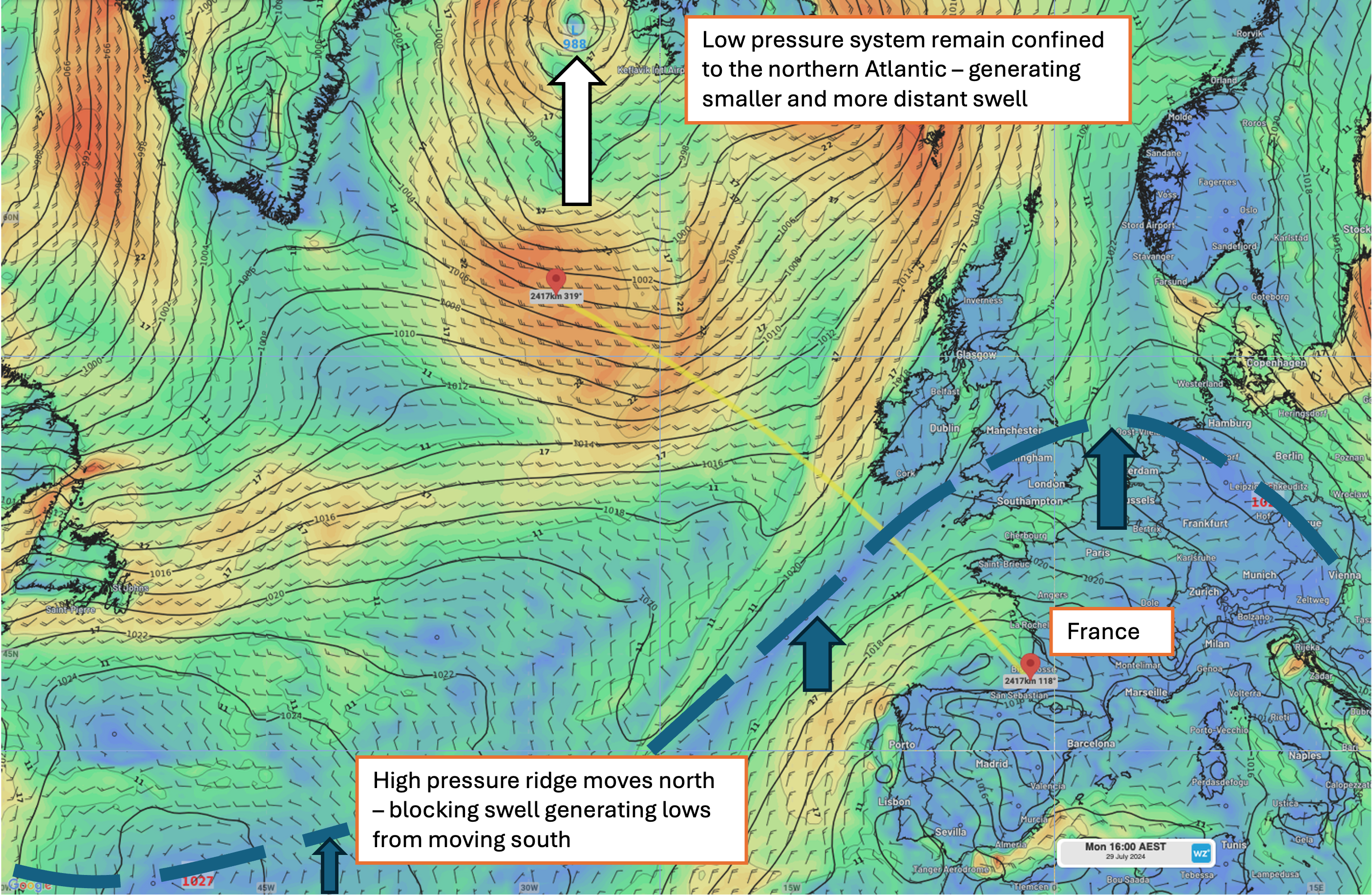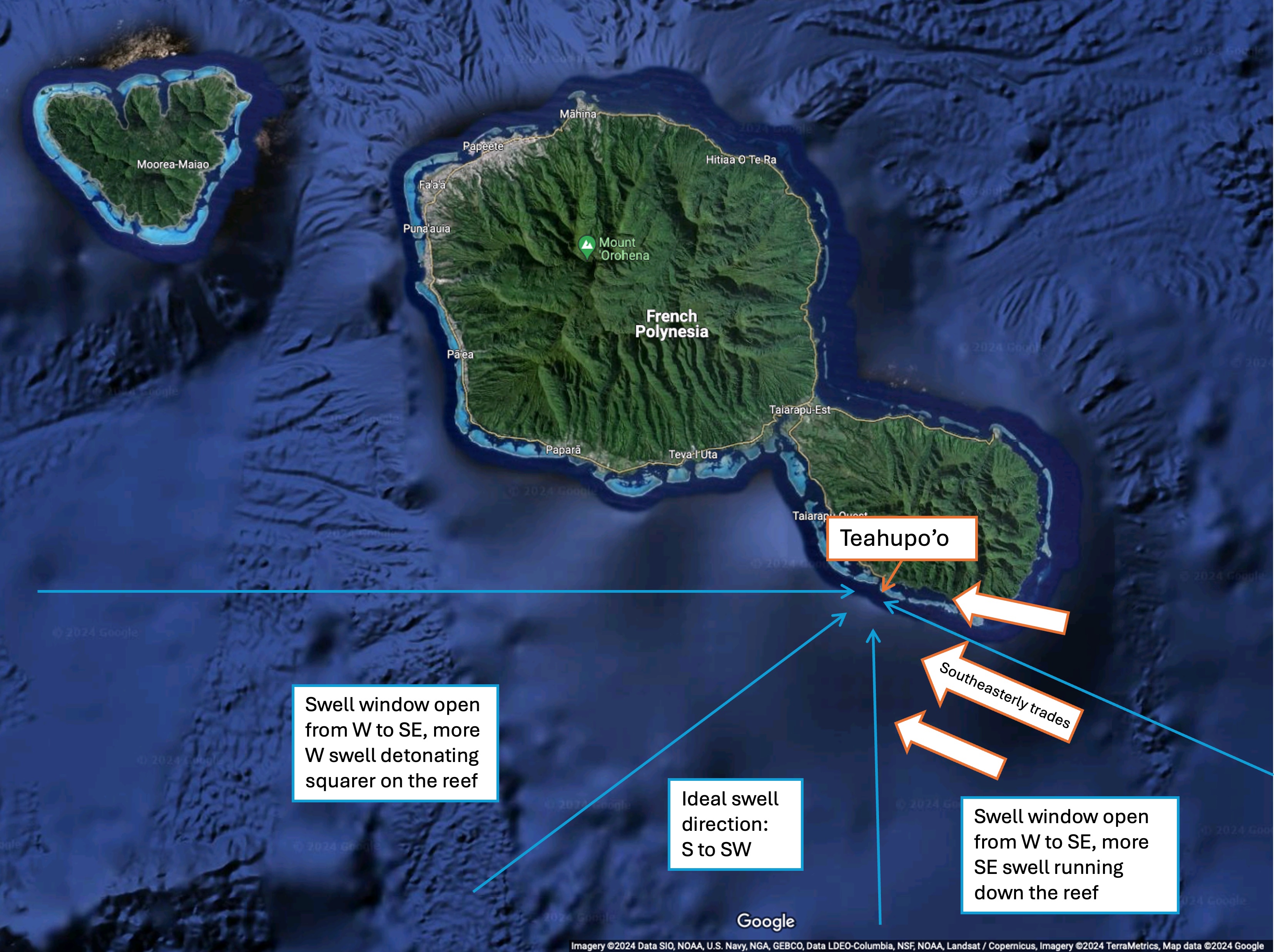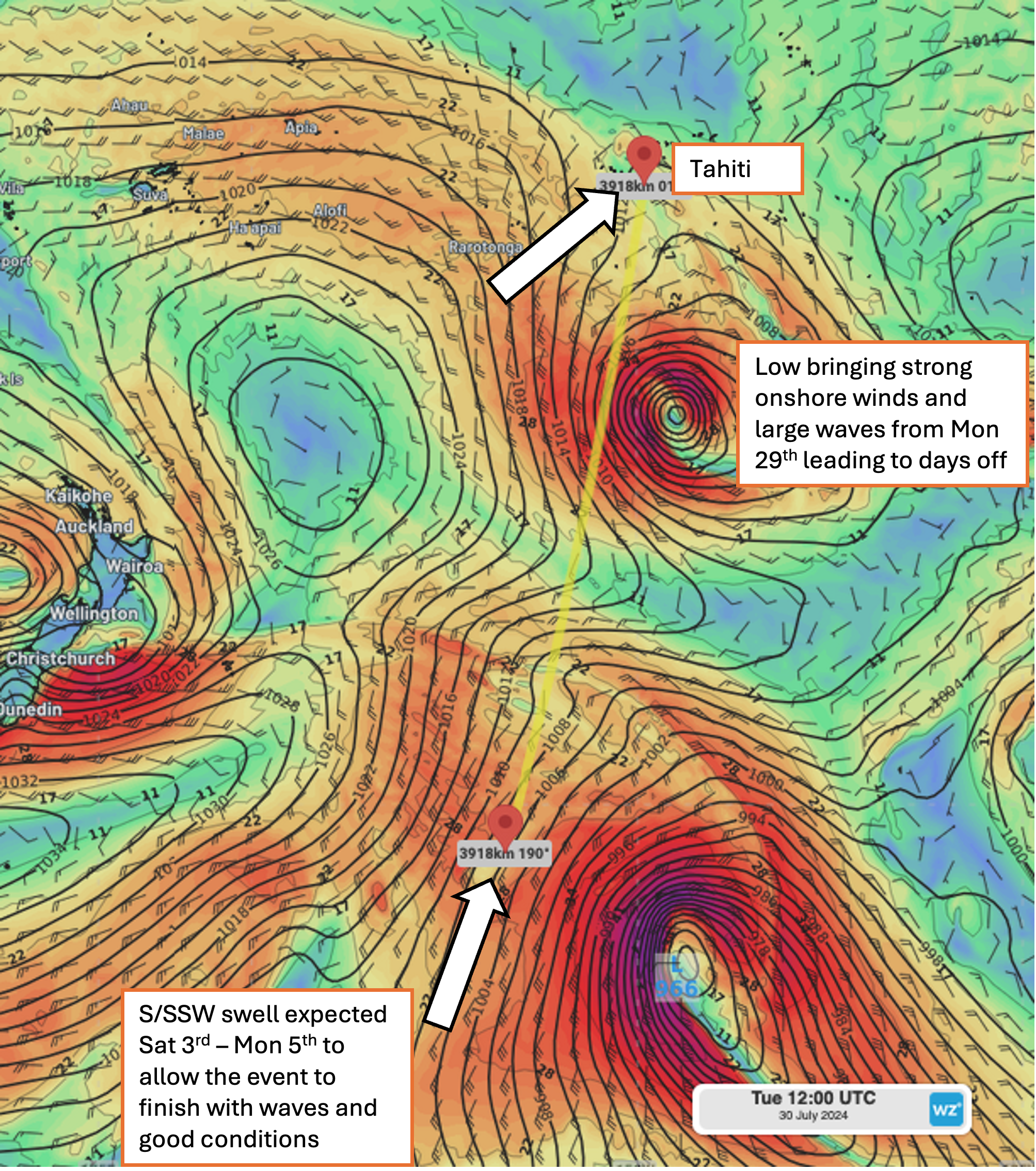The most distant Olympic event
The 1956 Melbourne Olympic equestrian events held in Stockholm used to be the pub trivia answer for the most distant Olympic event, until this year's Olympic.
During these 1956 Olympics quarantine and travel logistics made it near impossible to hold the equestrian events in Australia, so the Swedish capital of Stockholm was used to host these events. The distance between Stockholm and Melbourne is 15,586 kilometres. The 2024 Paris surfing event will take place 15,727 kilometres away from Paris, dethroning the 1956 event by just over 100 kilometres. The event is being held in Tahiti, French Polynesia, an overseas country of the French Republic.
Why the distance? Unlike 1956, quarantine and the pandemic are not the answer. Rather the lack of good waves during the European summer due to northwards migration of the sub-tropical ridge into the North Atlantic subduing the generation of powerful storms. This has allowed the organisers to search across the expansive French Republic to find one of the most impressive waves in the world to hold the event.

Annotated figure showing the North Atlantic basin during summer, with the sub-tropical ridge moving over Europe and the Atlantic Ocean, keeping low pressure system weaker and more confined to the northern Atlantic – leading to smaller and more distant swell during summer.
The wave they chose is called Teahupo’o, and loosely translates to pile or heap of heads in Polynesian. Located on the fringing reef off the volcanic island of Tahiti’s southeast, the ocean depth drops rapidly only a few kilometres offshore. This allows open ocean swells to march relatively uninterrupted into the shallow reef, leading to large waves that fold and detonate with immense power. The local bathymetry and reef angling into the southeasterly trade winds all help in making this one of the most impressive waves in the world.

Annotated figure depicting the location of Teahupo'o in Tahiti, as well as the prevailing southeasterly trades and the swell directions that provide surfable waves.
So how does the forecast look for the event window, which runs from today (July 27th - Tahiti is a day behind Australia) to August 5th? The first pair of days, Saturday 27th and Sunday 28th, will be days of competition as southwesterly swell brings good waves under generally favourable winds from the northeast (offshore), tending more northerly (side-offshore) on Sunday. Surf size should be around one and a half time overhead, trending smaller on Sunday.
From Monday 29th, the prospect of surfable days decreases significantly as a cut-off low passes close to the tropical island. The surf will be sizeable, but the onshore southwesterly winds will bring horrendous conditions out at sea, so organisers will pull the plug and give the competing surfers a couple days off.

Annotated figure of GFS weather model on Tuesday 30th 2am local time, showing the low near Tahiti bringing onshore winds and large, unruly surf, with another more distant low well to the south due to bring swell from the following weekend.
From either Thursday 1st or Friday 2nd, winds swing more southeasterly (side-offshore) as the low moves away, bringing improving conditions. A new swell from the south-southwest is then expected between Saturday 3rd and Monday 5th, allowing organisers to wrap up the 1 or 2 extra days needed to finish the event under these improved conditions.
Tahiti is 20 hours behind Australian Eastern Standard Time (AEST) - and exactly 12 hours behind Paris - so while Australians will need to be up early (4am starts), Europeans will be able to keep the day of competition going after dark, possibly making surfing the most watched event! Regardless of the prospect of swell, the tropical beauty of the Tahitian setting will awe the world, with the amazing diversity of the French Republic being showcased.